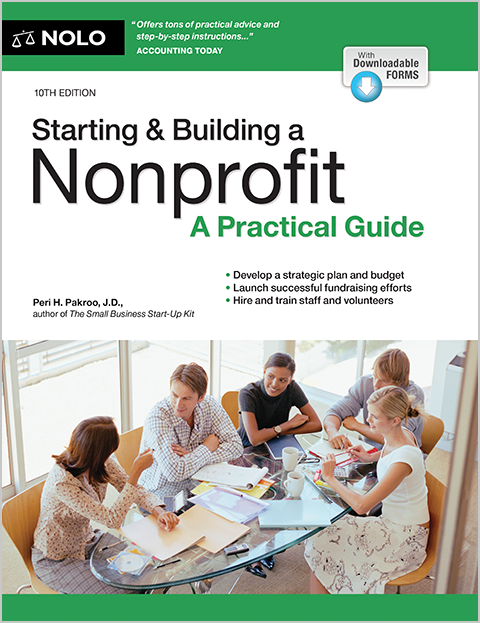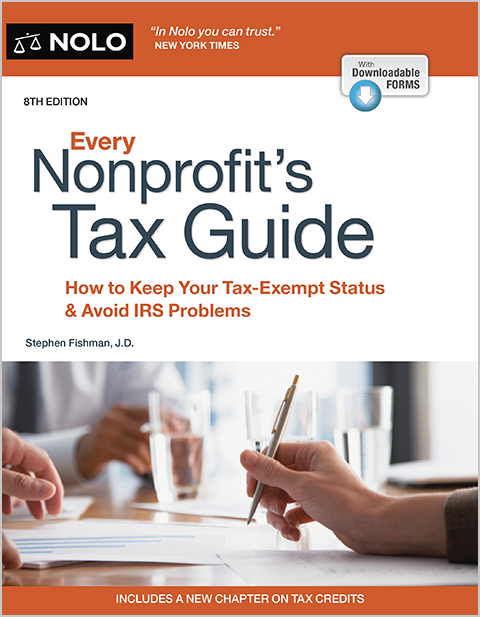Find out how to go about dissolving a nonprofit corporation in your state.
A nonprofit corporation may close because it's no longer able to get the necessary funding, the directors or members have irreconcilable differences, or the organization simply decides that it's met its goals and no longer needs to exist. Whatever the underlying reason, if you choose to close down a Massachusetts nonprofit corporation, you'll need to go through a process called dissolution. Dissolution requires a vote or other formal authorization, the filing of key documents with government agencies, and a group of other tasks collectively known as winding up the corporation.
The specific steps for closing a Massachusetts nonprofit organization will vary depending on several basic facts. Bearing that in mind, this article is limited in the following ways:
- it only covers Massachusetts nonprofit corporations (not all nonprofits are incorporated)
- it only covers nonprofits that have applied to the IRS and been approved specifically as 501(c)(3) tax-exempt organizations (not all nonprofits are exempt from paying taxes, and not all tax-exempt nonprofits are 501(c)(3) organizations)
- it only covers voluntary dissolution based on a decision by the nonprofit's directors and, where applicable, the nonprofit's members (a nonprofit may involuntarily have its charter revoked for administrative reasons, such as failing to file annual reports); and
- it only covers Massachusetts "public charities" (virtually all tax-exempt Massachusetts nonprofits are public charities, but there are separate dissolution procedures for nonprofits that are not public charities).
Benefits of Formal Dissolution
Your nonprofit corporation is registered with the Commonwealth of Massachusetts. Through the dissolution process, you will officially cancel that registration and officially end the corporation's existence. More specifically, for a nonprofit that's closing down, a properly handled dissolution achieves at least two important goals. First, it ultimately will put your organization beyond the reach of creditors and other claimants. Second, it will allow you to fulfill your legal obligations regarding the proper distribution of any remaining corporation assets.
Authorizing Dissolution
The procedure for authorizing dissolution will vary depending on whether, in addition to a board of directors, your nonprofit corporation also has members with the right to vote. You probably already know if your nonprofit has such members. However, if you're unsure, you should check your articles of incorporation, bylaws, or similar organizational documents.
Note: The Massachusetts Attorney General's Office ("AGO") requires you to comply with all registration and annual filing requirements before authorizing the dissolution of your nonprofit. You can go to the AG's website to check the status of your nonprofit's registrations and submitted reports.
Massachusetts law provides for voluntary dissolution through either:
- a vote by the board of directors; or
- if there are members entitled to vote on dissolution, a vote by those members.
If your nonprofit does not have voting members, you must prepare a petition for dissolution, and then your board must vote on the petition. Approval of the petition requires a majority vote of the directors.
If your nonprofit has voting members, check your articles of incorporation or bylaws. One of the latter documents may assign those members either the right to authorize dissolution by majority vote, or the right to make dissolution subject to the approval of those members.
Make sure to properly record both the board's petition and the directors' and/or members' votes. You'll need this information for filings with the state and the IRS.
Also, be aware that you can authorize dissolution by obtaining the unanimous written consent of the board of directors, or, where permitted by your articles of incorporation or bylaws, by the voting members. If you dissolve on this basis, all the directors (or voting members) should sign a written consent form.
Filing With the Attorney General or With the Court
After your board or members have approved the dissolution, you must file documents with a state office. Which documents you file, and where you file them, depends on whether your nonprofit corporation has any remaining assets at the time of dissolution.
Your nonprofit has no remaining assets at the time it dissolves. You must prepare and file the following documents with the AGO's Division of Public Charities:
- a Form PC-F
- an officer's certificate; and
- a petition for administrative dissolution.
To complete the Form PC-F, you will need to answer a series of questions regarding an array of financial matters. Blank forms and sets of instructions are available for download from the AGO's website. The submitted form must have an original signature (it can't be a copy).
The officer's certificate certifies and provides basic details about the vote to dissolve your nonprofit corporation. You can download a template for this certificate from the AGO's website. The submitted certificate must have an original signature (it can't be a copy).
The petition for administrative dissolution should include information such as:
- when your nonprofit was created
- a statement of why it's dissolving
- a statement that it has met all legal requirements for authorizing dissolution
- a statement that it has complied with all registration and reporting requirements
- a statement that that all funds it received were used to support its mission and that any disbursements made were consistent with that mission; and
- an acknowledgment that the AGO's approval of the dissolution does not, in and of itself, operate to waive or release any financial liabilities to third parties that might otherwise exist.
A template petition is available for download from the AGO's website. The submitted petition must have an original signature (it can't be a copy) and it must state the date of submission.
Apart from submitting the Form PC-F, officer's certificate, and petition with the Division of Public Charities, you are required to notify all appropriate state and federal agencies, such as the Secretary of the Commonwealth ("SOC") and the IRS, of your nonprofit's dissolution.
Your nonprofit has assets at the time it dissolves. You must file a petition with the Massachusetts Supreme Judicial Court ("SJC"). The petition, which should have been approved by your board of directors or members, should state with some detail the grounds for dissolution. In order to allow the dissolution, the SJC must be satisfied that your nonprofit's remaining assets will be distributed to another nonprofit for similar charitable purposes. (Note: The current law in Massachusetts allows for the possibility that the SJC may develop rules or orders that would allow a nonprofit with remaining assets below a certain amount to avoid submitting a petition to the Court, and instead submit forms, affidavits, or other information to the AGO. However, according to a recent statement by the AGO, the SJC has not yet developed any such rules, so for now, you must still file a petition with the Court.)
There currently is no template available online for a petition to the SJC. Therefore, you will have to draft your own—or, perhaps better, have a knowledgeable attorney prepare the document for you.
You should check directly with the AGO or with the SJC, as appropriate, for information on filing fees and processing times.
Distributing Remaining Assets
Your nonprofit may not have any remaining assets when it dissolves. However, if it does, keep in mind that, under IRS rules, a dissolving 501(c)(3) organization must distribute those assets for tax-exempt purposes. In practice, this generally means distributing assets to another 501(c)(3) organization. Moreover, apart from IRS rules, Massachusetts law indicates that remaining funds should be administered "for similar public charitable purposes" as those of your dissolving nonprofit, and as the SJC may determine. If you have any questions about whether this requirement applies to your nonprofit, you should check with a lawyer.
Federal Tax Note
For federal tax purposes, you'll need to file IRS Form 990 or IRS Form 990-EZ. You must include a completed Schedule N (Liquidation, Termination, Dissolution, or Significant Disposition of Assets) and copies of your articles of dissolution, resolution to dissolve, and, if applicable, any written dissolution plans. When completing either Form 990 or Form 990-EZ, you'll need to check the "Terminated" box in the header area on Page 1 of the return. For additional, more specific guidance, check out Every Nonprofit's Tax Guide, by Stephen Fishman (Nolo), go to the IRS website, or consult with a tax professional.
Additional Information
You can find additional information, such as forms, templates, instructions, mailing addresses, phone numbers, and filing fees, on the AGO website, the SJC website, and the SOC website.
Dissolving and winding up your nonprofit corporation is only one piece of the process of closing your organization. For further, general guidance on many of the other steps involved, check Nolo's 20-point checklist for closing a business and the Nolo article on what you need to know about closing a business.



